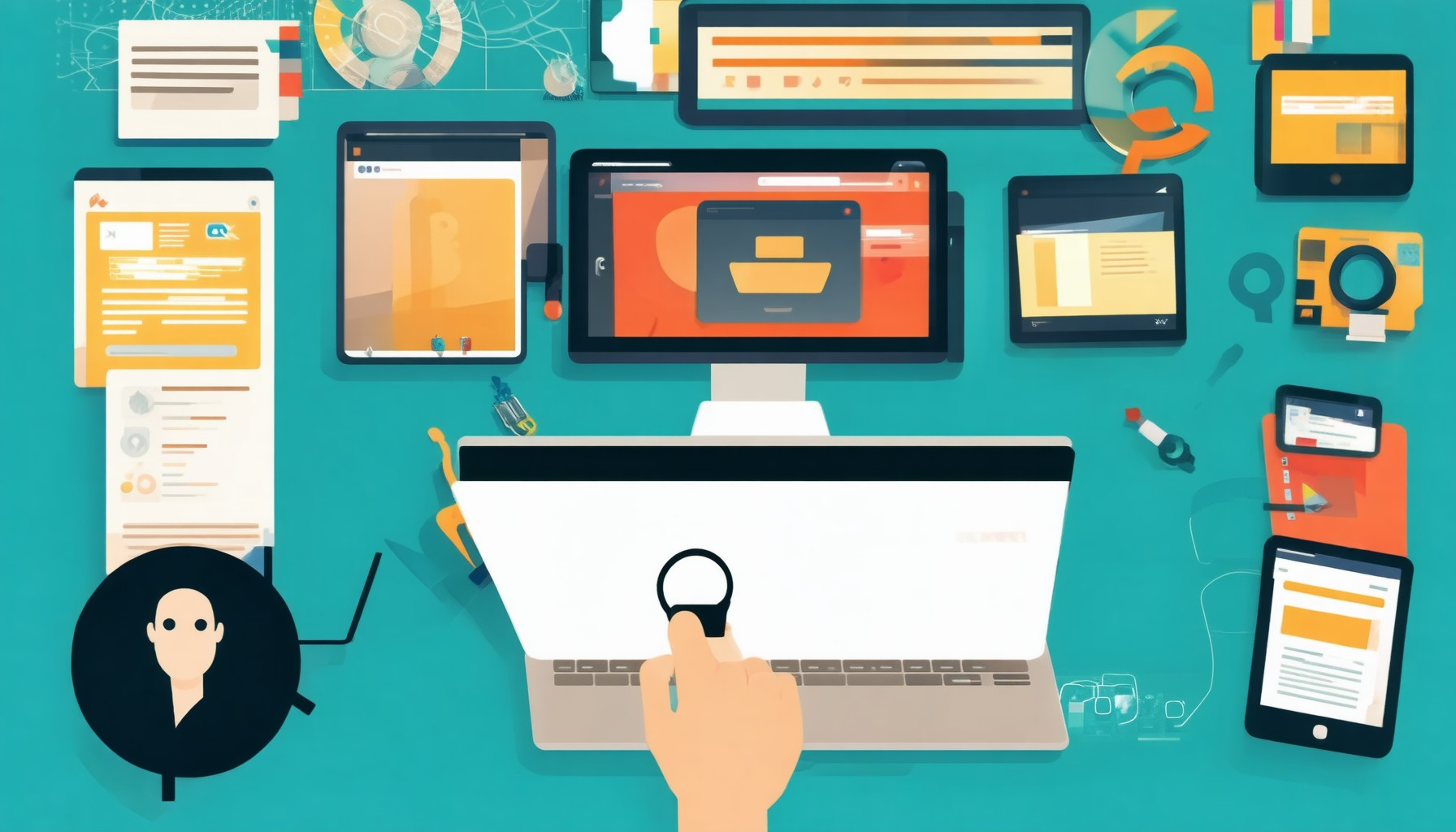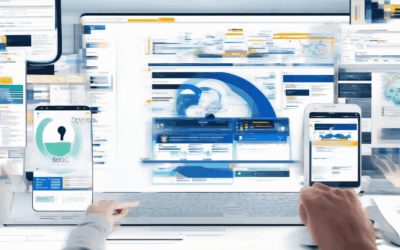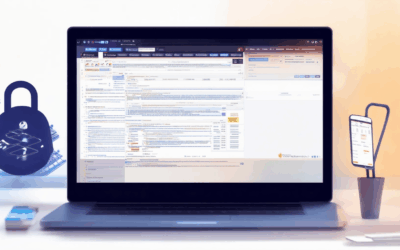In today’s increasingly connected world, protecting your digital identity has become more crucial than ever. With countless online activities tracking our movements, collecting our data, and influencing our decisions, maintaining online privacy is no longer optional—it’s essential. Whether you’re concerned about government surveillance, corporate data collection, or simply wanting to safeguard your personal information from cyber threats, understanding the basics of online privacy and employing the right tools is vital. This guide will walk you through the fundamental concepts, provide practical strategies, and introduce you to the best online privacy tools designed specifically for beginners. From understanding how to keep yourself private online to exploring free tools that can enhance your security, this comprehensive resource will equip you with everything you need to protect your digital identity and navigate the internet with confidence. Stay informed, stay protected, and take control of your online presence today.
Key Takeaways
- Protect Your Digital Identity: Safeguard personal information like names, addresses, and financial details to maintain online security.
- Achieve Anonymity Online: Use tools like BlindBrowser to hide your IP address and browse securely.
- Control Your Data: Know what information is being collected and adjust settings to align with your privacy preferences.
- Enhance Online Security: Implement strong passwords, two-factor authentication, and secure networks to prevent unauthorized access.
- Understand Privacy Types: Recognize the five key areas—personal, communication, data, location, and online activity—to better manage your privacy.
- Address Major Privacy Issues: Be aware of risks like information mishandling, mass surveillance, and location tracking to protect your data.
- Use Privacy-First Tools: Leverage resources like BlindBrowser to enhance your online privacy and security effortlessly.

Keeping Yourself Private Online
To maintain your online privacy effectively, consider implementing the following steps:
1. Use Strong Passwords and Manage Accounts
- Create complex, unique passwords for each account to enhance security.
- Utilize a password manager like LastPass to manage your credentials efficiently.
2. Protect Personal Information
- Remove your personal details from online directories and job boards.
- Regularly search for your name online to identify and remove unwanted information.
3. Enable Two-Factor Authentication
- Add an extra layer of security with 2FA for critical accounts, such as banking or email services.
4. Secure Your Internet Connection
- Avoid public Wi-Fi; if necessary, use a VPN like NordVPN or ExpressVPN .
5. Exercise Caution with Applications
- Only download apps from trusted sources like the App Store or Google Play Store.
- Use security apps to scan for malware, such as Avast .
6. Opt for Privacy-Focused Browsers and Search Engines
- Use browsers like Brave which block trackers and ads.
- Switch to a private search engine like DuckDuckGo .
7. Enhance Communication Security
8. Manage Social Media Presence
- Restrict your social media profiles to “friends only” and avoid oversharing personal details.
9. Utilize VPN Services
- Consider using a VPN consistently, particularly on public networks, to safeguard your online activities.
10. Block Cookies and Trackers
- Install browser extensions like uBlock Origin to minimize tracking.
11. Monitor Account Activity
- Regularly review your accounts for suspicious transactions or unauthorized access.
- Check your credit score using services like Credit Karma for early detection of identity theft.
By systematically applying these measures, you can significantly enhance your online privacy and security.
What are the 7 principles of privacy by design?
The 7 principles of privacy by design are foundational guidelines that help organizations embed privacy considerations into their products, services, and processes. These principles aim to ensure that privacy is prioritized and protected throughout the lifecycle of a system or product.
- Proactive Not Reactive: Organizations should take a proactive approach to privacy by building systems that anticipate and prevent privacy risks, rather than reacting to breaches after they occur.
- Data Minimization: Collect only the minimum amount of personal data necessary for the intended purpose, reducing the risk of data breaches and misuse.
- Encryption: Sensitive data should always be encrypted when stored, transmitted, or processed to protect it from unauthorized access.
- Anonymization: Use techniques like pseudonymization to process data in a way that removes or obfuscates personally identifiable information (PII), ensuring it cannot be traced back to an individual.
- User Control: Provide users with clear controls over their privacy preferences, allowing them to decide what data is collected and how it is used.
- Transparency: Be open and honest with users about how their data is collected, used, and shared. Clear privacy policies should be easily accessible and understandable.
- Accountability and Responsibility: Establish accountability for privacy practices by assigning clear roles and responsibilities within the organization, ensuring someone is liable for data protection failures.

How to Practice Digital Privacy
To safeguard your digital privacy, consider implementing the following practices:
- Use Strong Passwords : Create complex, unique passwords for every account. Combine letters, numbers, and symbols without predictable patterns. Consider using a password manager to store and organize your credentials securely.
- Enable Two-Factor Authentication (2FA) : Protect your accounts with an additional layer of security. Use authenticator apps or codes sent to your phone to verify login attempts.
- Regularly Update Software : Keep all devices, applications, and operating systems updated to patch vulnerabilities that could expose your data.
- Encrypt Your Data : Use encryption for sensitive files and communications. Enable end-to-end encryption for messaging apps like Signal or WhatsApp to ensure your messages are private.
- Avoid Public Wi-Fi for Sensitive Activities : Public networks may lack security, making them risky for banking or other confidential tasks. Use a VPN for safer connections.
- Minimize Data Sharing : Only share necessary information and be cautious about what you disclose online. Research company policies before sharing data.
- Use Privacy-Focused Browsers and Tools : Explore platforms like BlindBrowser which offer tools and resources to enhance online privacy and security.
- Monitor Online Activity : Regularly check accounts for suspicious activity and adjust settings to limit data collection. Use browser extensions to block trackers.
- Understand Your Rights : Familiarize yourself with privacy laws like GDPR or CCPA to understand your rights regarding personal data.
- Backup Data : Regularly backup important files to prevent loss due to hacking or system issues. Store backups securely offline or use cloud storage with strong encryption.
By adopting these habits, you can better protect your digital identity and maintain control over your online presence.

Basic Concepts of Internet Privacy
Internet privacy refers to the ability of individuals to control how their personal information is collected, stored, used, and shared online. It encompasses various aspects of digital privacy, including anonymity, data control, security, and consent.
Key Components of Internet Privacy
- Anonymity: The ability to browse or transact online without revealing one’s real identity. Tools like BlindBrowser help users achieve this through encrypted connections and hidden IP addresses.
- Data Control: The power to decide what personal information is collected and how it is used. Users should review privacy policies before sharing data.
- Security: Protecting sensitive information from unauthorized access. Strong passwords, two-factor authentication, and secure networks are essential measures.
- Privacy by Design: Building systems and services with privacy considerations from the ground up, often involving end-to-end encryption and minimal data collection.
- Consent: Explicit agreement to how personal data is used. Users should be informed about data collection practices and have the option to opt out.
Understanding these principles helps individuals safeguard their online activities and personal information. By leveraging tools like BlindBrowser , users can enhance their privacy and security while navigating the internet.
What Are the 5 Types of Privacy?
Privacy refers to the ability of individuals or entities to control access to personal information and maintain confidentiality. Here are five primary types of privacy:
- Personal Privacy:** This involves protecting an individual’s personal information, such as name, address, phone number, and financial details.
- Privacy of Communication:** Ensuring that messages, emails, and calls remain confidential and are not accessed without permission.
- Privacy of Data:** Safeguarding sensitive data, including health records, intellectual property, and other confidential information.
- Privacy of Location:** Protecting an individual’s physical location information, such as GPS data or location tracking.
- Privacy of Online Activity:** Managing and controlling information shared online, including browsing history, social media interactions, and device usage.
Protecting these aspects of privacy is crucial in today’s digital age, where personal information is often collected and used by various organizations. Tools and platforms like BlindBrowser help users enhance their online privacy by providing secure browsing options and educational resources.

Three Major Internet Privacy Issues
Internet privacy remains a significant concern in the modern digital age, with several critical issues impacting users daily. Understanding these challenges is essential for safeguarding personal information and ensuring online security.
1. Information Mishandling
One of the most prevalent privacy issues is the unauthorized access and misuse of sensitive personal information. Companies often collect vast amounts of data through various platforms and services, which can later be sold or leaked without consent. This includes everything from browsing history to financial details, potentially leading to identity theft or fraud.
To mitigate this risk, it’s crucial to research and understand how your data is collected and stored. Use platforms that prioritize transparency and offer robust privacy controls, such as BlindBrowser.com , which provides tools and resources to enhance online privacy.
2. Snooping and Data Collection
Mass surveillance and data collection practices have become increasingly common, with corporations and governments gathering extensive personal information. This can include location data, online activity, and even social media interactions, often without users’ awareness.
Protect yourself by enabling privacy settings on your devices and browsers. Tools like those available on BlindBrowser.com can help you manage and control your online footprint, reducing the risk of unwanted data collection.
3. Location Tracking
Many apps and services now track users’ locations, often without explicit consent. This can lead to targeted advertising, personalized recommendations, and even potential privacy breaches. Understanding and controlling location sharing settings is vital to preserving your privacy.
Regularly review your device settings to limit location tracking. Platforms like BlindBrowser.com offer insights and tools to help you manage your privacy preferences effectively.
Conclusion
By understanding these three major internet privacy issues, you can take proactive steps to protect your personal information. Utilize resources like BlindBrowser.com to stay informed and implement stronger privacy measures. Remember, your online privacy is your responsibility, and taking simple precautions can make a big difference in safeguarding your data.




